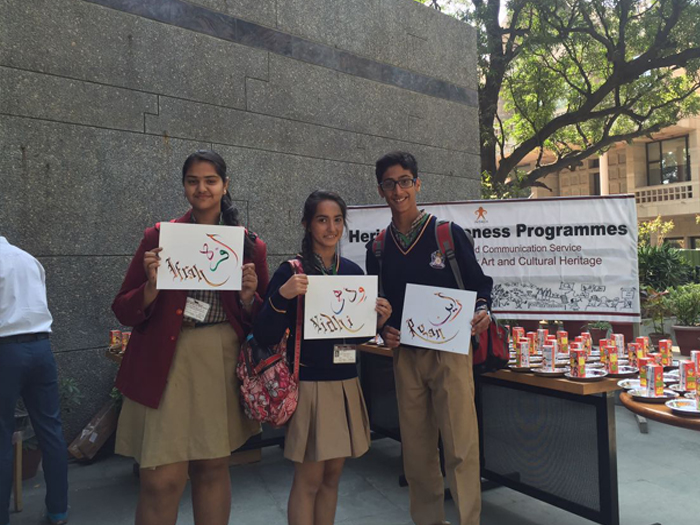Calligraphy workshop by INTACH
Calligraphy is a stylised form of writing that comes under the broad category of visual art. It is derived from the Greek word beauty (kallos) and to write (graphein). Religious texts are the most frequent vehicle for calligraphy in India.
A striking example of development of this form of stylised writing in Asia can be seen in the Indic script, Sanskrit. The beginnings of this can be traced to the 3rd century BC. During the Chola period, Rajaraja I built the Brihadeshvara Temple which bears the king's titles in ornate calligraphy. The Arabic calligraphic writings received a further boost in the Mughal period; almost every monument of this period evidences calligraphic writings, most often Quranic verses. Calligraphers were patronised by the court as they were critical for documenting the activities of the court. With the decline of the Mughal empire, the patronage to this art form dwindled and sadly today there are very few practitioners of this creative art.
[gallery link="file"]
INTACH organised a Calligraphy Workshop on 25th November 2016 to introduce pass this great tradition to school students. This workshop, a part of the celebrations of World Heritage Week, invited students from schools across Delhi. Four students, Ifrah Ali (IX), Vidhi Wadhwa (VIII), Ryan Suri (VIII) and Tejinder Sethi (VIII) were sent by School to attend the workshop, which was presided over by Ms. Purnima Datt, Principal Director, INTACH.
Each participant was handed an inkpot, sheets of paper and a pen or kalam, made of bamboo. A team of calligraphists then showed them how to hold the kalam and how to note some Urdu alphabets such as Aleef and Bae. They also taught the students how to write their names in English.
The eager learners readily picked up the skills and we hope, with practice and exposure, they are able to refine what they achieved in that first exposure.
Vidhi Wadhwa.













